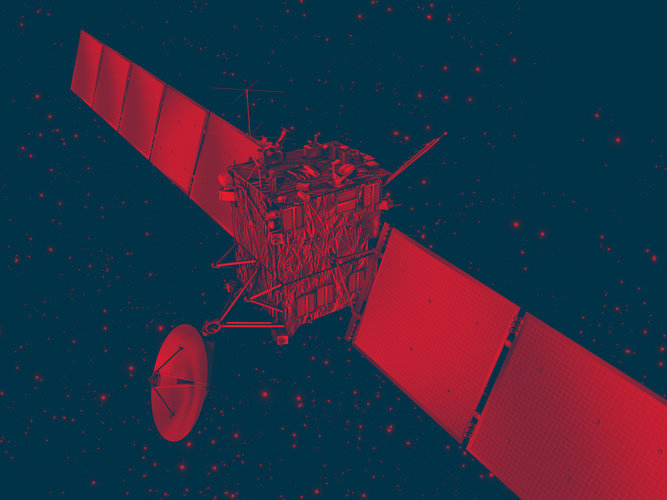Asteroid (2867) Steins: a portrait
Vital stats
| Size | 4.6 km |
|---|---|
| Orbital Radius | 353 million km |
| Class | E-type asteroid |
| Rotation Period | approximately 6.05 hours |
| Shape | irregular but not elongated |
| Closest approach | 5 September 2008, 20:58 CEST |
| Distance at closest approach | 800 km |
| Relative Velocity at the time of fly-by | 8.62 km/s |
Asteroid (2867) Steins is the first scientific target of ESA’s comet chaser Rosetta. Located in the main asteroid belt, lying between the orbit of Mars and Jupiter, this space rock is being intercepted by Rosetta, which is on its way to comet 67P/Churyumov-Gerasimenko. Closest approach is scheduled for 5 September 2008, 20:58 CEST.
Steins is one of the rarest types of asteroids in the Solar System and holds clues on how the planets formed.

To date, planetary scientists have used various spacecraft to visit eight different asteroids, with six fly-bys and two close orbits. On 5 September 2008, the Rosetta spacecraft will make it nine. It will fly by asteroid (2867) Steins en route to comet 67/P Churyumov-Gerasimenko, which it will reach in 2014. Before then, it will fly-by another asteroid, (21) Lutetia in 2010.
Steins was discovered in 1969 by N Chernykh at Nauchnyj, Crimea, and first listed as 1969 VC. After its orbit was firstly established, it received the number 2867 and was named after Karlis Augustovich Steins, the former director of the Latvian University Astronomical Observatory. Before the Rosetta team chose it for their fly-by, it was an object about which astronomers knew very little.
So, an observational campaign with ground-based telescopes was started in order to piece together some facts in preparation for the closer look. Steins surprised them: it turned out to be a kind of asteroid that no spacecraft had flown close to before.
Called an E-type asteroid, it may once have been part of the outer regions of a much larger asteroid, which has fragmented. Such E-type asteroids are quite rare.
Asteroids are important because they pre-date the planets and retain a memory of that phase of the Solar System’s formation: they are the pieces that got left behind in the process of planet formation. Planets form in a chaotic process in which some planetesimals collide and coalesce, whilst others impact each other with such energy that they fragment. After millions of years, the coalescence wins and planets are formed.
In the asteroid belt, however, the accretion process was halted with the birth of Jupiter because its enormous gravity shepherded the asteroids into more orderly orbits. This reduced the chances of collision and effectively stopped the asteroids from developing into planets any further.
During the fly-by campaign Rosetta will be taking accurate measurements of the asteroid’s size, shape and volume, and will measure its rotation rate and reflectivity of the surface. It will also take images and spectra, from which conclusions can be drawn about its composition and collisional history. Rosetta will be on the lookout for natural satellites around Steins, dust and any magnetic field that the asteroid might be generating.
Apart from delivering brand-new science, this fly-by acts as a rehearsal for the campaign planned for asteroid Lutetia in 2010.
For more information on asteroid types, please see article Debris of the Solar System: Asteroids.















 Germany
Germany
 Austria
Austria
 Belgium
Belgium
 Denmark
Denmark
 Spain
Spain
 Estonia
Estonia
 Finland
Finland
 France
France
 Greece
Greece
 Hungary
Hungary
 Ireland
Ireland
 Italy
Italy
 Luxembourg
Luxembourg
 Norway
Norway
 The Netherlands
The Netherlands
 Poland
Poland
 Portugal
Portugal
 Czechia
Czechia
 Romania
Romania
 United Kingdom
United Kingdom
 Slovenia
Slovenia
 Sweden
Sweden
 Switzerland
Switzerland



























